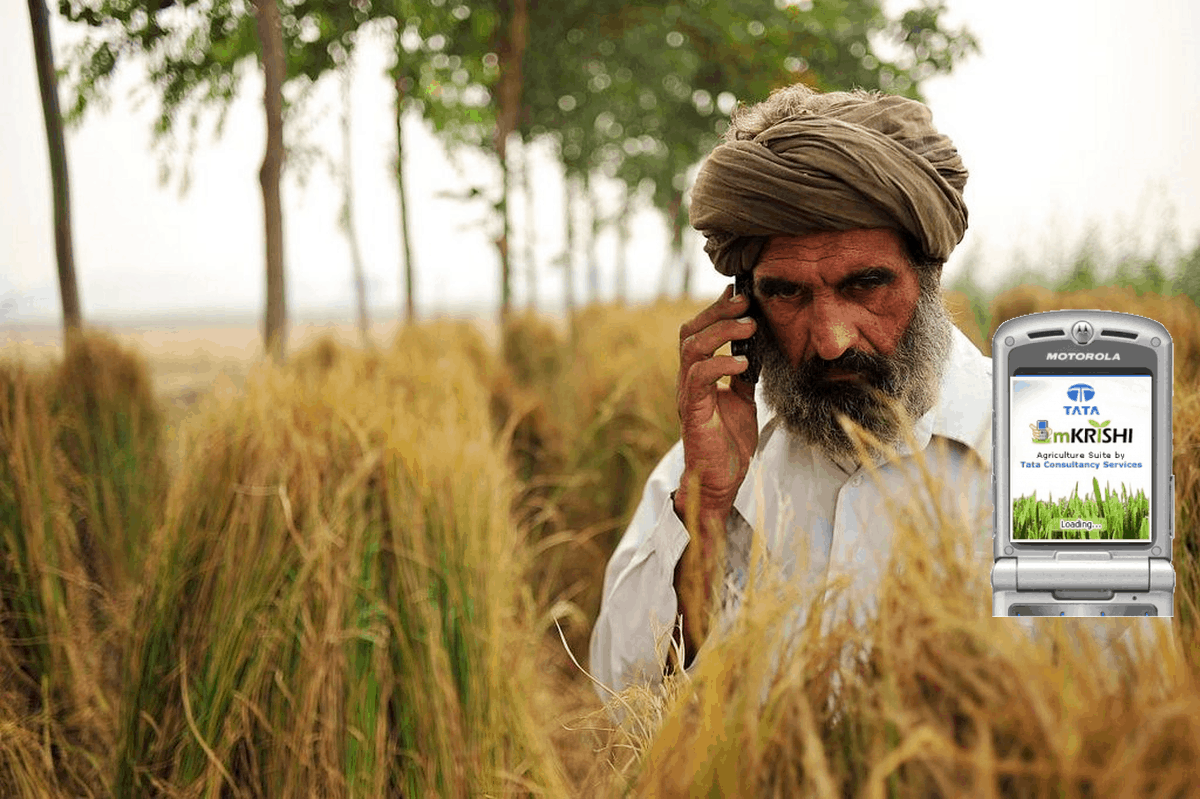The meaning of development has expanded beyond the domain of economics where it has become a new catchword for fields like technology, science, politics, anthropology, sociology, to name a few, and is now perceived as ‘Human Development’. With the intention of understanding and designing innovative technologies for the underprivileged, under-resourced, and marginalized communities around the world, the field of Human-Computer Interaction for development (HCI4D) (Biljon, 2020) comes to the light. Considering various economic, socio-cultural, and infrastructural constraints associated with the developing regions, the lines between the developing and developed spaces have become extremely blurred when it comes to creating new technological innovations for rural areas. Moreover, human-computer interaction (HCI) is highly influenced by urban spaces where technologically developed cities make them a bastion for future design innovations and due to which the small developing rural spaces get overlooked (Hardy, Phelan, Hayes, Su, Wyche & Sengers, 2019).
India consists of about 65.074% of the rural population which estimates to be more than half of its population living in rural regions that are underdeveloped. Rural development has recently become one of the important issues as the rural economy has significant contributions to the gross domestic product (GDP) of the country. The rural population, on the other hand, is often not thought of as a possible driver of innovation, but rather as a design challenge that has to be resolved and forgotten. Especially, if we consider the Particularly Vulnerable Tribal Groups (PVTG) who are the most marginalized tribal groups in India, which contribute to about 8.6% of the total population that are seldom recognized for their rich social or cultural advantages, whereas on the contrary, they are often solely viewed as an origin of resources for cheap labor, food, timber, or oil.
Using the research domain of HCI4D operated through proper channels of HCI and information and communication technologies for development (ICT4D) (Biljon, 2020) could open up boundless possibilities of inclusive and sustainable growth that could emerge as a bedrock from these sites of innovation and knowledge that are largely indispensable and unexhibited (Hardy, Dailey, Wyche, and Su, 2018). However, the challenges still remain with the propagation of those alien technologies within the target audience.
Role of HCI4D in Development of Rural Population
The recent developments in the field of HCI and ICTD have given rise to a multitude of opportunities in the different segments of rural and urban societies. However, it is not entirely true due to the fact that rural areas lag behind in terms of basic infrastructure and services like health, education, transportation, and government services. It is largely assumed from a city’s perspective, that for rural development the rural population requires additional time and resources to catch up with their developed counterparts.
Moreover, the term urban is even deeply infused in the core definition of rural where the extent of rurality is expressed by the population density and its proximity from the large cities (Chomitz, Buys, and Thomas 2005). But these rural communities have survived to this date because of their particular set of characteristics that shaped the sort of technologies suitable for them.
This paper explores the different ways in which HCI4D could bridge the overall infrastructural gap and tries to address these socio-cultural constraints by inculcating practices of ethnographic inquiry, participatory design, and co-experience with the rural stakeholders. As a result, it enables rural people to connect with the local, regional, and national economies and gain better access to markets, finance, and education through the channel of e-governance. Therefore, I will try to cover 3 different segments that are agriculture, education, and economics using various methods (potentially effective) and examples of HCI4D to better understand this.
Role of Agriculture in Rural Development
In the rural areas worldwide, agriculture is the most crucial means of land use and economic viability where farming and various activities associated with it contribute to an integral part of rural life. In terms of employment, business prospects, infrastructure, and environmental quality, agriculture adds significant value to the overall state of rural regions. Considering the potential economic benefaction of agriculture to the overall development in India, it has contributed to about 20.2% of the total country’s Gross Value Added (GVA) (Ministry of Agriculture & Farmers Welfare, 2021) where it has proven to be the primary source of livelihood for about 58% of India’s population (Indian Agriculture and Allied Industries Industry Report, 2021).
Conventional agricultural practices for cultivation, animal husbandry, and creating organic compost are operated with minimum automation of the fields (Bhan and Behera 2014) and therefore face fewer challenges now. However, the increasing demands and the changing geographic and climatic conditions could lead to heavy resource depletion due to which these sustainable practices would not be possible in the near future. With the recent advent of the HCI4D research, methods, and tools have observed accomplishment in agricultural development objectives leading to a wider social, economic, and institutional growth. Hence, it could be utilized in providing better access to natural resources, improving agricultural technologies, planning effective production strategies, restructuring banks schemes, financial services, marketing chains, and enhancing local and national agriculture-related policies, to begin with. Also, the core to all these changes would be building quality partnerships with the rural residents by having their constant involvement and utilizing their expertise at every stage of the process for accurate insights and higher chances of successful implementation.
For instance: MKrishi, a design intervention by Dr. Arun Pande (TCS Innovation Labs) which delivers specific information to the farmers using mobile devices. It allows farmers to connect (call or helpline texts) with agriculture experts from different domains. To ensure experts have accurate information about the local region, every farming locale has been fully equipped with an automatic weather station with crop and soil sensor technologies that have been established locally. To combat the electricity shortage, the weather station is also powered by solar technology. These stations enable farming experts to provide appropriate recommendations based on the local farming conditions which have been monitored in real-time. This project uses the pervasiveness of mobile phones (fitted for both high as well as low-end handsets) to deliver hyper-local information to an underprivileged population. However, this is just the beginning of a supportive engagement, there are still other spectrums that could be explored using HCI4D such as the other reliable modes of communication in rural areas (radios and televisions), integration of local dialect into the mobile phones keypads, cheap maintenance options for the weather stations, and most importantly, expanding the team of experts by recruiting local progressive farmers who have similar status and cultural profiles and are proficient in understanding various local dialects to serve a large number of the rural population.
Role of Education in Rural Development
The most fundamental right of every citizen in the world is the right to education. Whether a child lives in the most developed metropolitan city or is located in the remotest village, they all are eligible for a basic level of elementary education. Even after 75 years of freedom, some states in India are still struggling with universal enrollment, retention, and quality of education. With the overall literacy rate of 75%, there are still huge gaps in that of the tribal children (PVTG) where literacy rate varies from 10% to 44% based on different tribes. Even though schools have proper infrastructure for boarding and provide free school supplies like books, pens, and uniforms, there are numerous cases of absenteeism, stagnation, and wastage in tribal areas. The root cause of such discrepancies is socio-economic, psychological, and educational factors.
The economic burden on the parents is too heavy so to earn an extra working hand, they prefer to keep their children at home rather than sending them away for school. As for the psychological factor, due to the high illiteracy among the tribals, the tribal child lives in an area that is completely devoid of any educational activity and therefore has extremely low receptivity towards new ideas and thoughts about what is taught in class. The number of teachers in a school is very less, due to which they are not able to give personalized attention to every child in the class. Issues like the commuting distance and domestic problems add to the loss of interest in studies which eventually lead to their detention. Moreover, on the educational front, the availability of books and educational materials in the regional languages rather than using their mother tongue leads to the disintegration of students.
The growing recognition of ICT and HCI in the field of education in different ways can actively contribute to the transformation of activities, roles, and relationships between education and children overcoming these barriers in remote settings.
For instance: During the pandemic, to bridge the learning gap, the government of Odisha has taken the initiative of mobile school vans for PVTG as per the School Sanjog Programme (The Times of India, 2021). The pandemic triggered a shift from traditional teaching to online learning which unfortunately denied education to the tribal children due to the lack of basic technology like smartphones or even internet connectivity that are required to access it. However, this initiative of mobile schools is aimed at reaching out to the children living in remote locations which are not easily accessible otherwise. With a visually appealing design of the van, it is equipped with audio-visual course material, books for classes one to five, kits for science, sports, and hygiene education through which children will be able to actively engage in memorable learning experiences where every session will last about 2 hours. This initiative is currently being implemented in the state of Odisha where the government is planning to target around 40,000 children in 1000 tribal villages. Although this is a good starting point towards a more inclusive education system, there is still a lot to be explored using the principles and methods of HCI4D. With limited resources that could fit in the van, multifaceted dimensions of those materials could be considered like multiple-mice configurations for collaborative computer-based learnings (Pawar, Pal, Gupta & Toyama, 2007) or conversion of audio-visual coursework material into native languages. These methods can help in expanding their reach to a more broad segment of the rural population.
Role of Economics in Rural Development
The rural economy is the core of India’s economic growth where the major chunk of about 46% of the national economy is generated from the workforce residing in the rural regions. Therefore, rural development is a crucial factor in the growth of the Indian economy. However, rural areas are the central point of poverty and unemployment. Lack of income and work opportunities cause the village youth to migrate. Governance deficiencies and informality characterize rural places where gender inequality is extremely pervasive. If equal access would be given to the rural women in agricultural assets, education, and markets as males, the agricultural output might be enhanced and the number of hungry people could be significantly decreased. Another factor is the inefficiency of rural labor markets causing the labor market institutions, as well as their structure, to be underrepresented. The availability of social protection is also quite restricted where rural employees are extremely vulnerable and, in many cases, are barely protected by national labor legislation. Due to the fragility and lack of organization, rural workers’ especially the indigenous and tribal peoples, are at a higher risk of exploitation where their voices are frequently unheard in terms of both rural development and larger economic and social development.
For instance: Rural regions are diverse in nature and should not be only considered for agriculture. Recently the increase in the use of mobile phones has enhanced the possibilities of connectivity and therefore provided better access to business opportunities and expanded the demand for local market supplies which has given direct control in the hands of rural consumers. However, various methods and tools of the HCI4D could be efficiently utilized to explore the new dimension and perspectives among the approaches, strategies, and programs that could contribute to the economic development of rural areas. HCI4D can also be used to enhance the use of Industrial training institutes in the rural areas to provide more focused training on different domains.
Conclusion
Rural development can only be richer and more meaningful if rural people are involved not just at the core of the problem but could participate at a deeper level. People’s participation is the focal point in rural development, just as execution is the touchstone for planning. HCI4D could provide opportunities for rural people to engage at every stage of the development process, both procedurally and philosophically. Ultimately, it will allow us to realize our role in designing not for the rural but rather for the rural.



